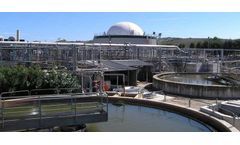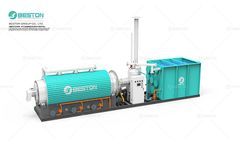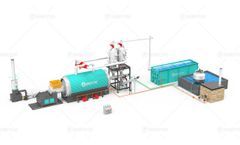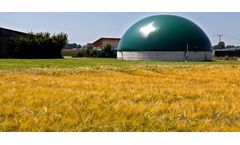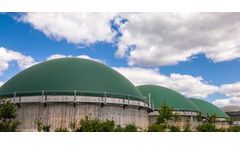Refine by
Waste To Energy System Articles & Analysis
63 articles found
Anaerobic digestion can transform what was once considered a liability into a reliable energy source The imperative for sustainable practices in industrial operations has never been greater. Among the sectors facing increasing pressure to reduce environmental impact is the meat-processing industry. While the public conversation around this industry often centers on emissions and waste, it is ...
As the demand for renewable resources and waste-to-energy technologies grows, the profitability of biochar production has become an important consideration for businesses and investors looking to enter the green energy sector. ...
This reduces the need for fossil fuels and helps in the circular economy model by reintroducing waste into the production cycle. Pyrolysis gas, which consists of volatile hydrocarbons, can be used to power the pyrolysis process itself, thereby making the system more energy-efficient and reducing external energy needs. ...
When exploring renewable energy solutions and waste-to-energy technologies, two methods often emerge in discussions: biomass gasification and pyrolysis. While both processes involve the conversion of organic materials into valuable energy, they operate on different principles and produce distinct outcomes. Understanding the differences between biomass gasification and pyrolysis is crucial for ...
Critical considerations for anaerobic digestion projects In the field of industrial wastewater treatment, anaerobic digestion is a powerful process that transforms waste into valuable by-products. Most notably, it produces renewable energy in the form of biogas, which can be used to fuel operations, cogenerate electricity, or even be sold. Another valuable by-product of the process is digestate, ...
Well-insulated reactors and advanced heat recovery systems help minimize energy waste. By efficiently recycling heat within the system, the reactor can operate with reduced external energy input, leading to significant cost savings in the long run. ...
The mini pyrolysis plant represents a significant opportunity for investors looking to enter the waste-to-energy sector. By converting waste materials such as plastics, tires, and biomass into valuable by-products, mini pyrolysis plants offer a sustainable solution to waste management while generating potential revenue streams. ...
The pursuit of sustainable energy sources has intensified as the world grapples with the dual challenges of waste management and energy security. ...
Pyrolysis, the thermochemical decomposition of organic materials in the absence of oxygen, has emerged as a potentially lucrative technology for waste management and resource recovery. However, embarking on a pyrolysis venture necessitates a thorough understanding of the economic viability of the process. This article delves into the intricacies of pyrolysis profit analysis, equipping potential ...
The evolution from batch to continuous pyrolysis plants marks a transformative leap in waste management technology, redefining efficiency and sustainability standards. ...
By harnessing locally available waste materials, tyre pyrolysis contributes to energy independence and resilience in the face of fluctuating fuel prices and geopolitical uncertainties.Waste Reduction Converting end-of-life tires into alternative energy helps alleviate the burden of tire waste management and disposal. ...
By utilizing plastics in renewable energy systems, the industry can maximize energy production while minimizing the environmental impact. ...
ByAntecs
Army that proved the BioMax® system could convert dry packaging materials from mobile kitchens to utility grade electricity using a standard Army, diesel fueled, 60 kWe Tactical Quiet Generator (TQG). Under Subsequent SBIR projects with the Army, CPC has continued to upgrade the BioMax® Waste-to-Energy (WEC) system to ...
Whether it's agricultural residues, forestry waste, or even coconut shells, the mobile biochar pyrolysis equipment can efficiently convert these materials into biochar without the need for extensive transportation.Real-time Processing: Efficiency Redefined On-the-Go Pyrolysis In the realm of waste-to-energy conversion, time is of the essence. ...
This article delves into the heart of these technologies, unraveling the nuances that distinguish them in the pursuit of sustainable waste-to-energy solutions. Continuous Pyrolysis Plant: A Symphony of Uninterrupted Transformation Efficient Continuous Operation The hallmark of a continuous pyrolysis plant lies in its seamless and uninterrupted operation. ...
There is enormous potential to increase the extraction of energy from farm waste Agricultural waste is one of the largest sources of methane emitted into the atmosphere from human activities. Methane is a potent greenhouse gas but it’s also highly combustible, making it a valuable source of renewable energy when captured. ...
The benefits can be compelling, but several factors must be considered Anaerobic digestion is a biological process that breaks down organic matter in the absence of oxygen, producing biogas and nutrient-rich sludge. Used in wastewater treatment, anaerobic digestion helps reduce the volume of sludge, stabilizes the solids, and produces valuable biogas. The solid matter that remains, called the ...
Legislation has potential to boost biogas use across the US When anaerobic digestion is used to process wastewater with a high organic load, it produces energy in the form of biogas, a combination of methane, carbon dioxide, and other gases. In the United States, there is huge potential for expansion in anaerobic digestion, but even though the energy produced can more than pay for the treatment, ...
In the dairy industry, the production of biogas can be profitable, even for small farms Dairy farms must deal with wastewater that’s particularly high in organic matter and that can be challenging to deal with. However, establishing an on-farm anaerobic digestion plant that generates biogas from cattle slurry offers several benefits: It captures methane and converts it into a renewable ...
Anaerobic digestion can turn waste into a valuable resource Billions of tons of organic waste are generated every day by households, industries, and municipalities. It’s discarded into landfills or discharged as effluent, or both, at a huge cost to the environment. But what if that waste could be turned into energy? The good news is that it can, through anaerobic digestion. In anaerobic ...

